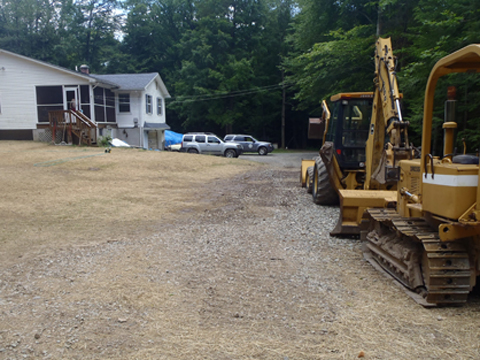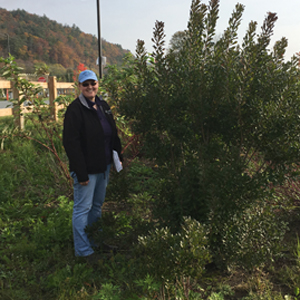News

Construction Planning 101

By Ellen Enslin, Senior Resource Conservationist, Certified Professional in Erosion and Sediment Control
Granite counters, blue kitchen walls, hardwood floors and… compost filter sock? When planning to construct a new house, consideration of the earth disturbance and site work outside of the house is as important as making decisions about the home’s interior.
Any activity that disturbs the surface of the land can cause erosion and sedimentation, potentially reducing water quality, degrading aquatic habitats, and increasing the frequency and intensity of flooding events.
Project Planning
When planning your project, it is helpful to examine the physical features or topography of the site and the immediate surrounding area. By identifying the direction of water flow across the site, it is easier to manage stormwater and potential sediment.
In addition, the location of any surface waters (streams, ponds, wetlands, springs, etc.) should be determined and these areas should be protected from sediment. The on-site soils should be examined to determine how readily water will infiltrate into the ground.
Amendments may be needed to improve the soil, help establish healthy plant roots, and grow good vegetation. For example, Pike County soil is often acidic and can be amended by applying lime to raise the pH.
General soil information can be obtained from the U.S. Department of Agriculture’s Web Soil Survey. Or, on-site soil tests can be completed using testing materials from PennState Cooperative Extension.
All of this information can be utilized to determine which best management practices (BMPs) are most appropriate for the site. Temporary BMPs may include things like compost filter sock, and seeding and mulching. Permanent BMPs may include vegetation and drainage.
Minimize Earth Disturbance
Good planning of your site development should ideally minimize the area of earth disturbance as well as the amount of time the soil is disturbed. Consequently, the less you’ll have to manage.
Implementing the following guidelines will minimize erosion and save money:
- Avoid disturbing existing vegetation – Vegetative cover is the most effective and economical protection against soil erosion.
- Save topsoil – Stockpile all topsoil from cuts and fills and redistribute uniformly after grading.
- Minimize the area and time of exposure – Disturb the minimum area required to complete a project.
- Work in the dry – Plan work to avoid periods of bad weather.
- Avoid steep slopes – Steep sites generally require more erosion and sedimentation controls than gently sloping sites.
- Plan to protect ditches, streams and other bodies of water – Maintain existing vegetation along streams or install temporary BMPs.
- Plan to maintain erosion control measures –Schedule regular maintenance checks to ensure properly functioning BMPs.
Develop an E & S Plan
Completing and properly implementing an Erosion and Sediment (E&S) Control Plan for your earth disturbance project will help protect Pike County’s soil and water resources.
It is also required under the Pennsylvania Department of Environmental Protection (PA DEP) Erosion and Sediment Control Program (Chapter 102), which the Conservation District is delegated to administer.
Contact the District to discuss your Pike County project whether it includes:
For more information, call us at 570-226-8220, or email us.
